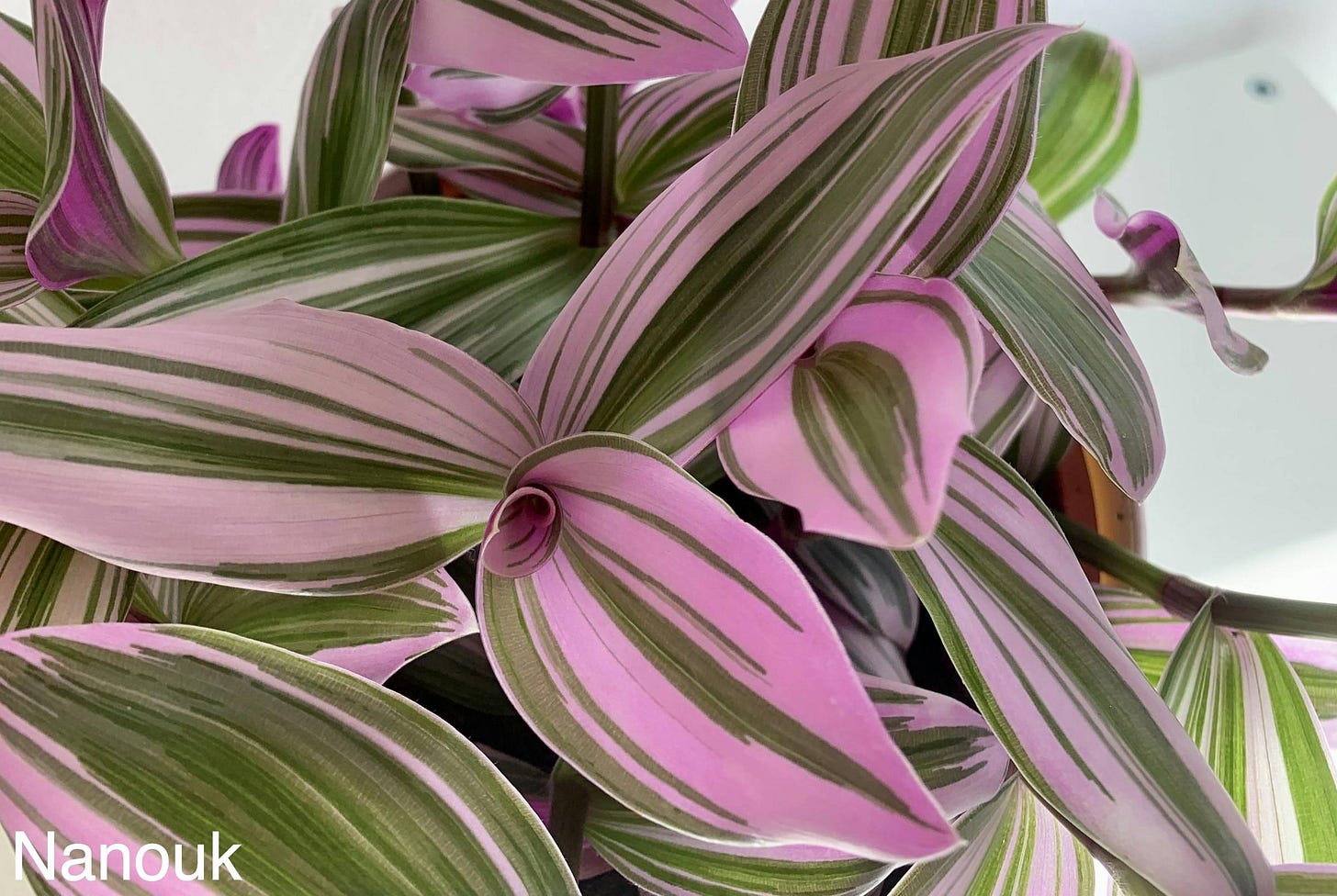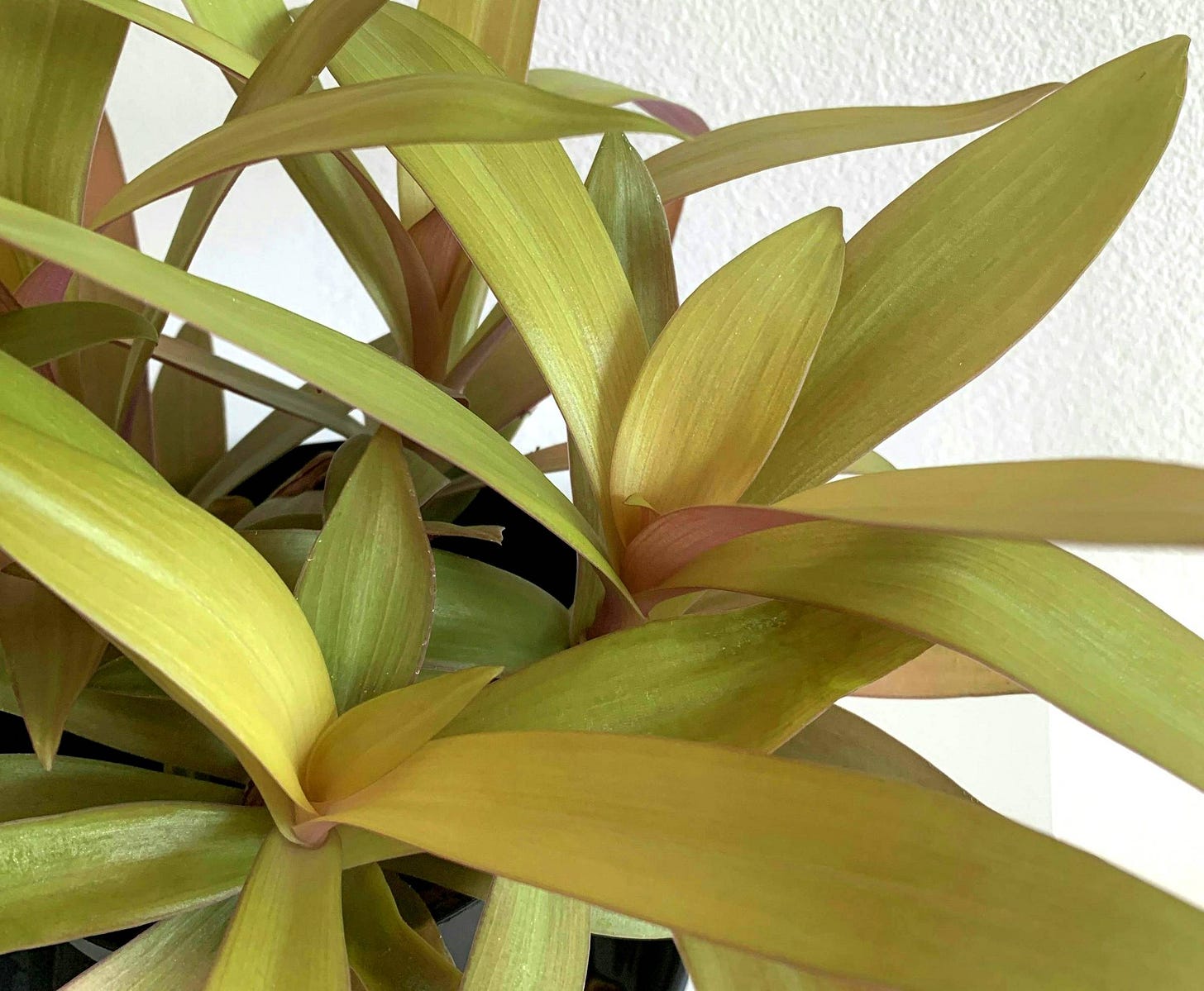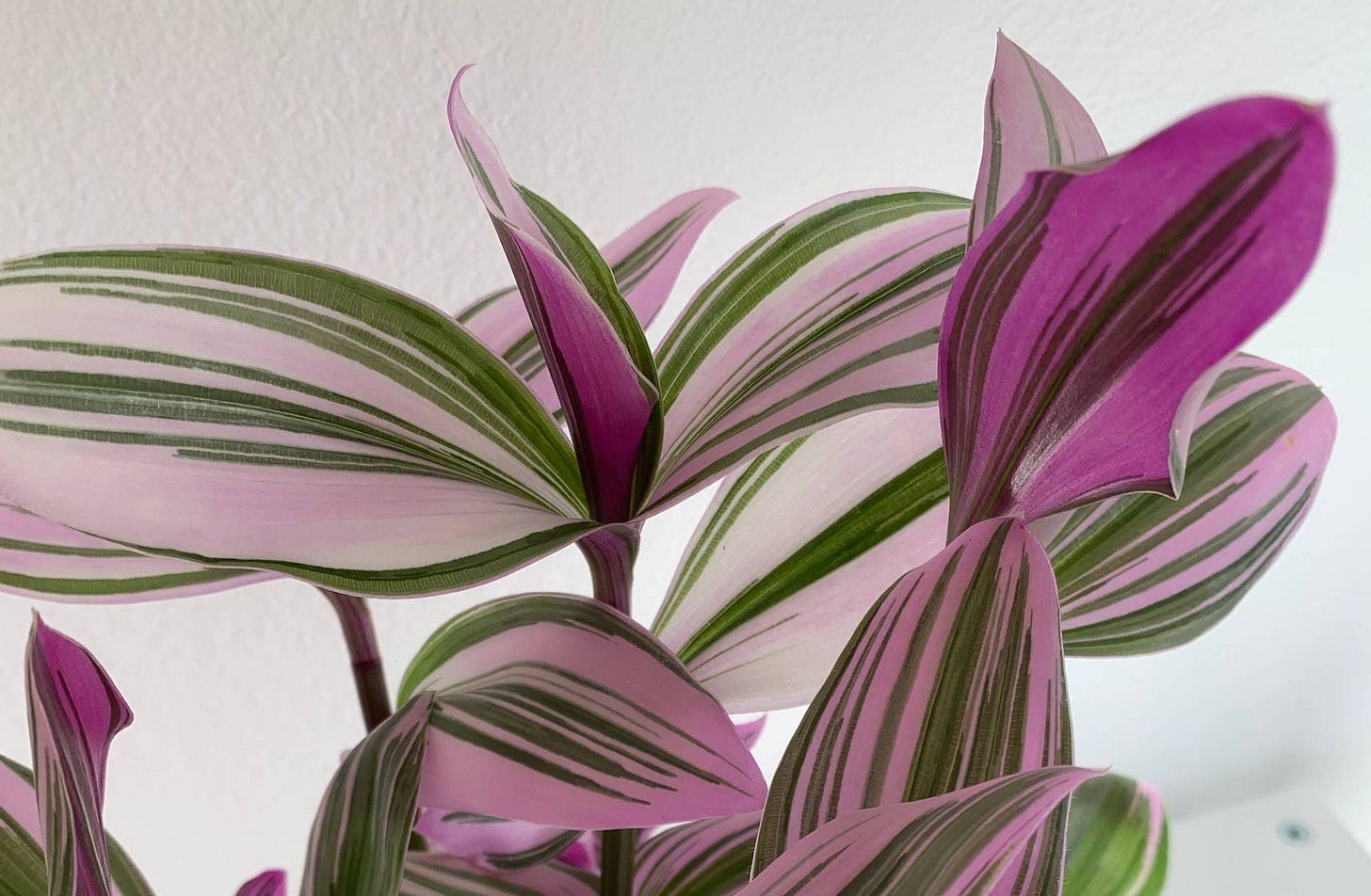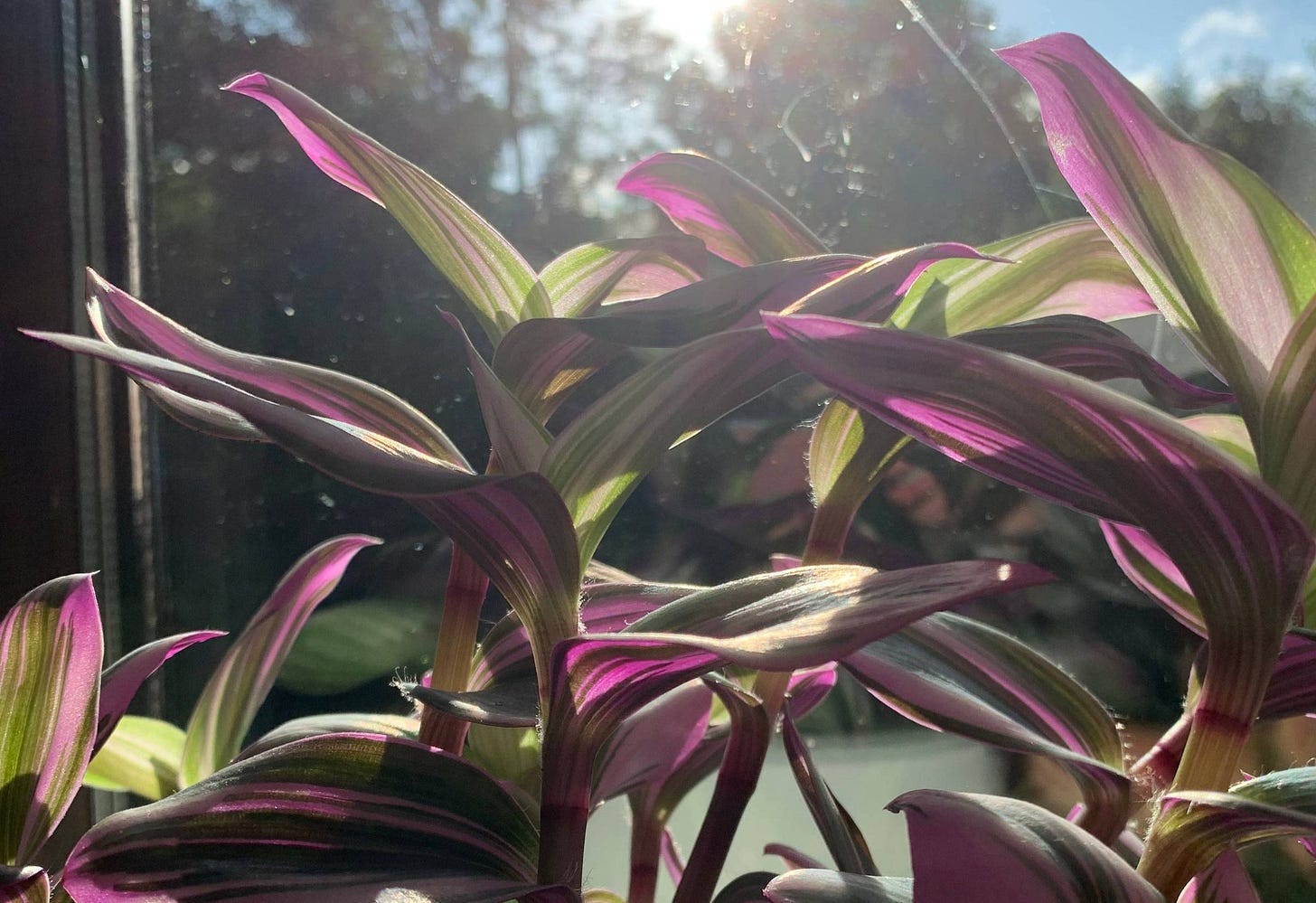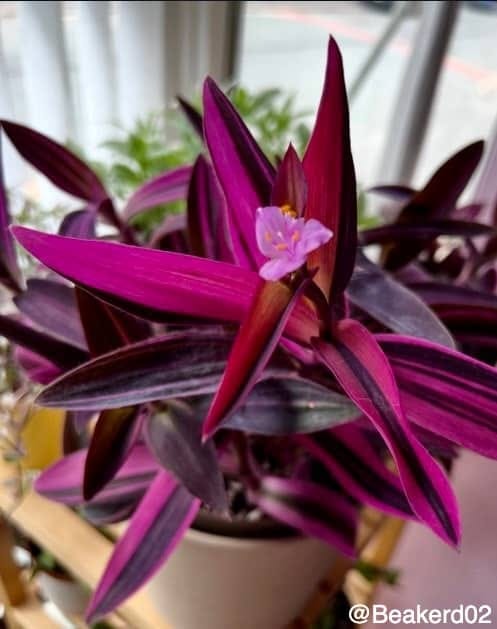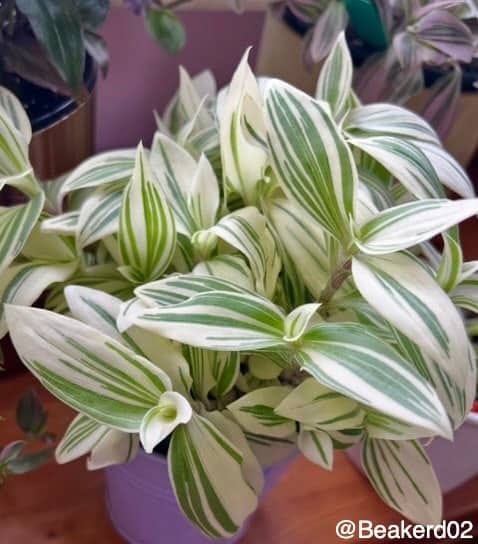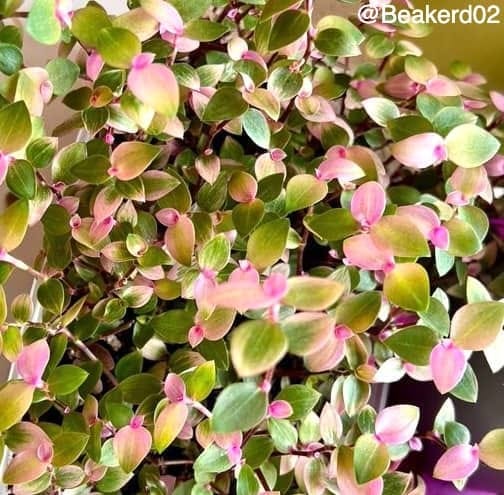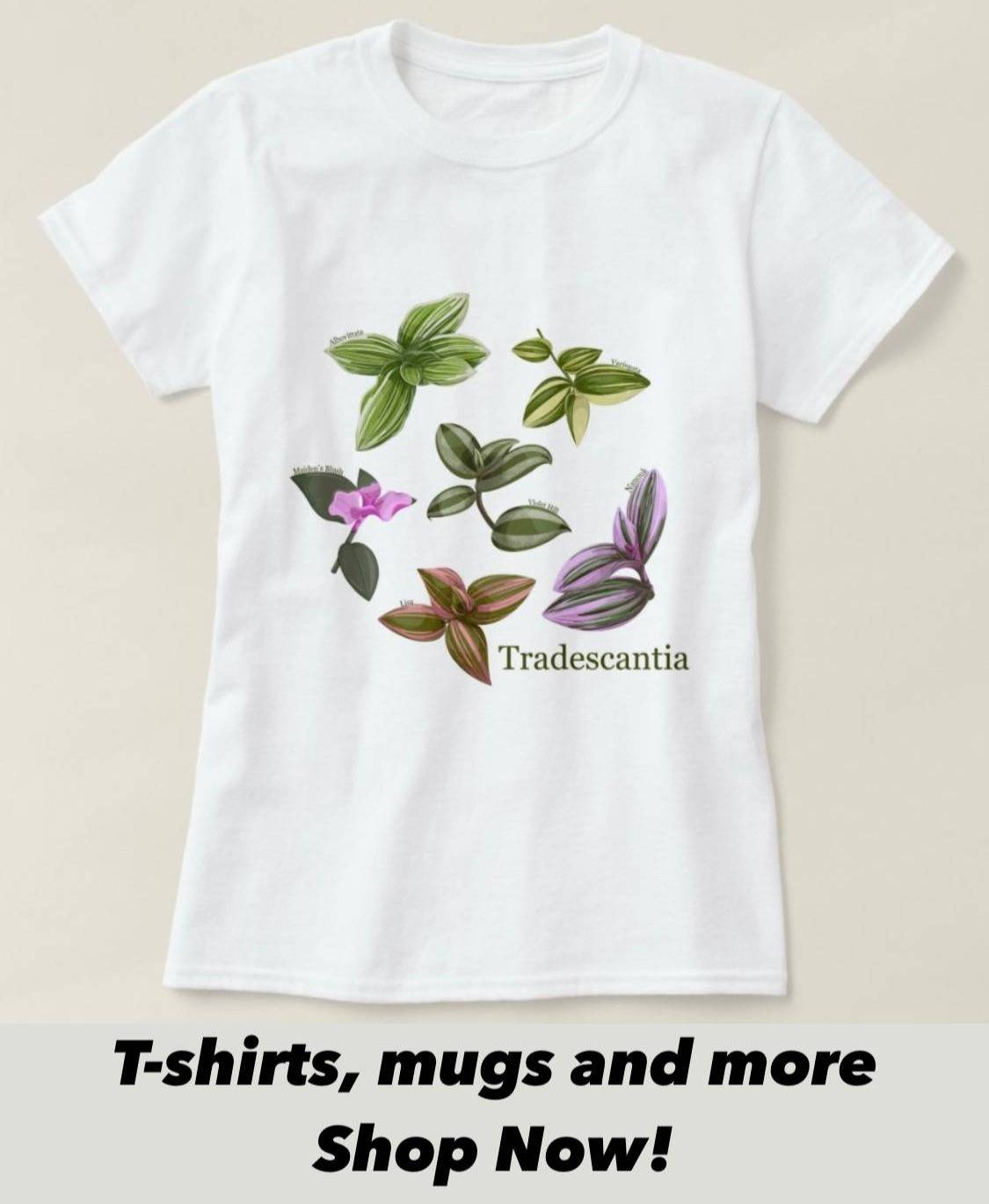Struggling with Brown Spots on Your Nanouk? Let’s Fix It!
Have you noticed brown spots appearing on your Tradescantia Nanouk? It can be so frustrating, especially when you’re not sure what’s causing it, or how to stop it. Nanouk is a bit of a drama queen, but don’t worry! In this newsletter, I’ll walk you through the most common causes and share some easy tips to keep your Nanouk happy and healthy.
That’s not all! This week’s Tradescantia of the Week is the golden-leaved beauty Lemon Sunset (often incorrectly called Sitara Gold), and in our Community Highlight, meet Joanne from the UK, who’s turned her Tradescantia passion into an incredible collection of 90+ varieties!
Tradescantia of the week: Spathacea Lemon Sunset
This week’s Tradedescantia is Lemon Sunset. It was was recently renamed, changing from HANSOTI02 to Lemon Sunset. There is still a cultivar called HANSOTI02, but it refers to the similar variety with green stripes. These green stripes can sometimes fade, and when they do, the plant turns into a Lemon Sunset.
These stunning cultivars are both also often incorrectly called Sitara Gold.
It’s easy to see where the nickname comes from, its golden-yellow leaves are truly eye-catching! Sometimes, it’ll even have green stripes on its leaves, adding even more character.
Lemon Sunset belongs to the Spathacea species, known for its compact growth habit. This variety forms upright rosettes with long, narrow leaves. It blooms with small white flowers that are tucked close to the stem in tiny pockets, which is typical for this species. However, this cultivar flowers very rarely.
In lower light conditions, the golden leaves may turn greener, but once you increase the light, the vibrant yellow color will come back. So, if you want to keep it looking its best, make sure it gets plenty of light!
Brown Spots on Nanouk Leaves: What’s Really Going On?
Tradescantia Nanouk is undoubtedly a stunning plant, but it’s also a bit of a drama queen. If you’ve noticed brown spots appearing on your Nanouk’s leaves, you’re not alone. There are so many theories out there: Is it water on the leaves? Too much sun? Not enough sun? Do they need to stay constantly moist, or do they need to dry out between waterings? The conflicting advice can leave you feeling overwhelmed and unsure about what to do.
Let’s break it down and look at the possible causes of brown spots on your Nanouk’s leaves and, most importantly, how to avoid them.
Possible Causes of Brown Spots
1. Overwatering
Overwatering is one of the most common reasons for brown spots on a Nanouk. This plant doesn’t like sitting in soggy soil, especially if it’s not getting enough light. Always check the soil before watering and let it dry out completely between waterings. When in doubt, it’s better to underwater than to overwater. Nanouk can recover from underwatering much more easily than from root rot caused by too much water.
2. Too Little Light
Nanouk needs plenty of light to be happy. The common advice to place them in bright indirect light can sometimes be misleading, leading people to put them in spots with too little light out of fear that they’ll burn in direct sunlight. While it’s true that sudden exposure to direct sunlight can cause sunburn if the plant isn’t used to it, Nanouk will adjust over time and absolutely love some direct light.
Too little light weakens the plant, making it more susceptible to pests, diseases, and other issues that can cause brown spots on the leaves. If your Nanouk has been in a darker spot, try gradually moving it to a brighter location to avoid shocking it.
3. Variegation Sensitivity
Variegated plants like Nanouk are more sensitive than their all-green counterparts. The lighter-coloured parts of the leaves are especially prone to damage. Too much light can scorch these areas, while too little light can cause them to weaken or even lose their variegation. Inconsistent watering can also stress the plant and lead to brown spots on the variegated parts.
4. Pests
Pests like thrips can cause damage that looks like brown spots or patches. Thrips are particularly drawn to Tradescantias, and their damage often appears as silvery or brownish spots. Check your plant regularly for signs of pests and treat infestations immediately.
5. Water on Leaves
There’s a lot of debate about whether water on the leaves causes brown spots. Some say yes, some say no. Personally, I don’t think water itself is the issue. However, leftover water lingering on leaves can create problems if it sits in dense parts of the plant or is exposed to direct sunlight, leading to fungal infections and sun burn. To be safe, avoid misting your Nanouk. If you prefer top watering, use a watering can with a narrow spout to avoid splashing the leaves or bottom water.
6. Humidity
Tradescantias are usually adaptable to a wide range of humidity levels, so there’s rarely a need to adjust it. However, extreme conditions can still cause problems. Very humid environments can lead to rot, especially if combined with overwatering or poor airflow. On the other hand, very dry indoor air can cause the plant to dry out much faster, making it harder to keep up with watering.
In most cases, there’s no need to invest in a humidifier or try to raise the humidity in other ways.
Is It Just Genetics?
Sometimes, even if you’ve done everything right, Nanouk will still develop brown spots. Some experts believe that its tendency to develop brown spots might be genetic. It’s part of what makes Nanouk the drama queen it’s known to be. So if your plant isn’t perfect, don’t be too hard on yourself—sometimes there’s only so much you can do.
My Nanouk and Brown Spots
A while back, my own Nanouk started showing brown, crispy spots on its leaves. I initially thought it was due to low humidity and drafts from the window, so I chopped and propped it. But to my disappointment, most of the cuttings rotted. They were in such bad shape that propagating them directly in soil wasn’t a good idea. I saved a few pieces that weren’t completely beyond saving and placed them in sphagnum moss under a grow light. Luckily, they survived and even grew new roots!
What went wrong? In my case, it was likely a combination of overwatering and too little light. I had been watering sporadically, not checking the soil before I watered, and because it was winter, the plant wasn’t getting enough light. Had it been summer, the plant probably would have coped better. I still get new brown spots every now and then, but it’s just a random leaf here and there and nothing that causes any trouble.
Final Thoughts
If your Nanouk is developing brown spots, take a step back and evaluate its care. Start with the basics—check the soil, adjust the watering, and provide the best lighting conditions you can. And remember, even the healthiest Nanouk can be a bit unpredictable, so don’t stress too much if it’s not always picture-perfect.
Community Highlight
This week, I’m want to introduce you to Joanne from Lancashire, UK!
Joanne is not only a Tradescantia enthusiast but also shares her love for plants on Instagram and runs an eBay shop, both under the name Beakerd02. With a growing collection of around 90 Tradescantia varieties, she has plenty of knowledge and passion to share. Let’s hear more about her journey!
What’s your favorite Tradescantia and why?
“This is such a difficult question, it’s like being forced to choose a favorite child! 😂 I think I’d have to say all Callisias. They grow so quickly, and I love to sit and chop their tiny leaves, it’s incredibly relaxing.”
Which was your first Tradescantia, and where did you get it?
“My first was Green Hill, and I had it for over a year before I even realized it was a Tradescantia! It was the only plant I had ever managed to keep alive. From there, I started searching for more Tradescantias, and one thing led to another... Now I have around 90 different types!”
What’s the #1 Tradescantia on your wishlist?
“It’s not Tradescantia, but at the moment, it would have to be Variegated Cyanotis Kitten Ears. I already have the regular one, and it’s so cute.”
What’s one care tip or trick you swear by for your Tradescantias?
“Buying a moisture meter was the best investment I ever made, I’m naturally an over-waterer, so it’s been a lifesaver. I also think lighting makes such a dramatic difference to their colors. I love moving them from room to room to see where they’re happiest.”
Any fun or unexpected stories about your Tradescantias?
“I bought a DRATRA01 (Roxxo) cutting about four years ago. It started in a tiny pot, and even though I repotted it a few times, it completely stopped growing. After about 18 months of no growth, my cat knocked it off the windowsill and broke the pot. I had to replant it in a pot that was far too big—but to my surprise, it started growing incredibly quickly after that! For some reason, DRATRA01 only seems to grow well in a pot that I’d normally consider too large, but it works!”
Make sure to check out Joanne’s Instagram Beakerd02 for more Tradescantia inspiration and goodies. Thank you, Joanne, for sharing your Tradescantia journey!
Do you have a Tradescantia collection? Or maybe one or two you’re especially proud of? Why not show it off in the next newsletter’s Community Highlight?
Reply to this email, email me at katja@exploringtradescantias.com, or send me a DM on Instagram—I’d love to feature your favorite plants!
Until next time, happy planting! 🌿
Katja
Disclaimer: This is an affiliate link, which means I earn a small commission if you make a purchase using my code, at no extra cost to you. Your support helps me keep sharing Tradescantia tips and content—thank you!


